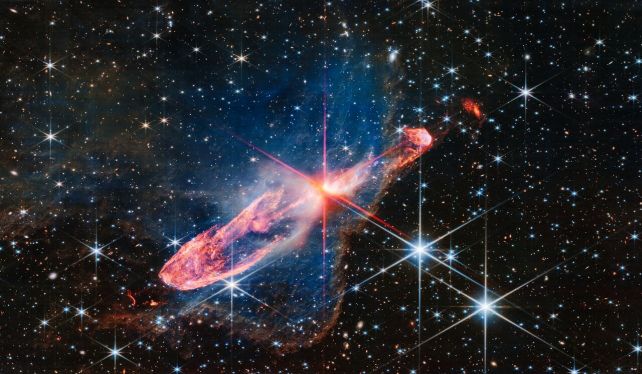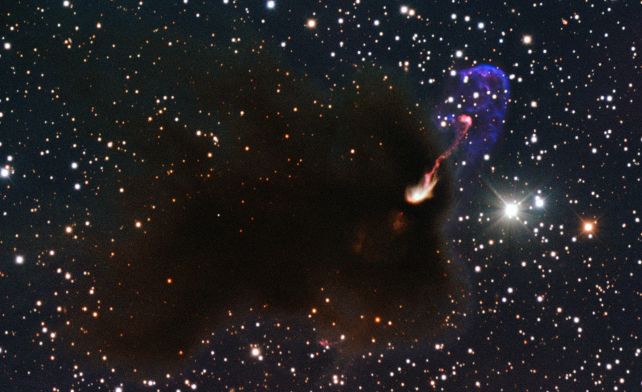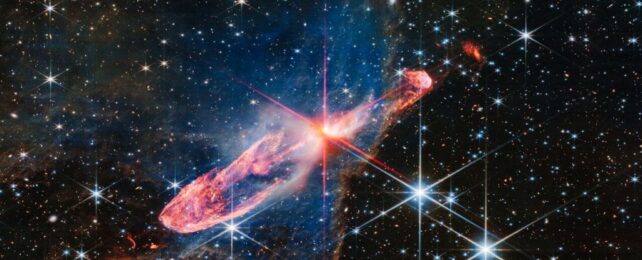The rare and short-lived outburst from a pair of baby stars has been immortalized in a new image from the James Webb Space Telescope.
The binary star and its outburst is called Herbig-Haro 46/47, and it belongs to a class of some of the most spectacular objects in the Milky Way. Known as Herbig-Haro objects, they're certainly beautiful, but they're also very scientifically valuable since they can help us understand the formation process of baby stars.
The formation of a Herbig-Haro object requires a particular set of ingredients. It starts with a baby star still in the process of forming, known as a protostar.
Protostars form from denser clumps in an already dense cloud of gas and dust that collapse under their own gravity and start spinning. As they spin, they spool in more and more mass from the cloud around them.

Some of this material, astronomers believe, doesn't make it onto the star. Rather, it is whisked away along magnetic field lines around the outside of the protostar, and accelerated towards the poles. When it reaches the poles, it is launched away at high speeds as a collimated jet. It's very similar to the process whereby active black holes launch jets.
The protostar jets can then punch into the surrounding cloud material and the incredibly high temperatures involved turn that material into plasma. This produces two glowing lobes on either side of the protostar, which is still shrouded by a thick torus of dust and gas.
So you get these glowing patches of nebulosity erupting from a dark, dusty blob.
JWST's infrared sensitivity means it can peer into the dust, since infrared light doesn't scatter the way other wavelengths do. So the telescope can let us peer inside those dusty knots to take a closer look at the baby stars therein.

HH 46/47 is only a few thousand years old; stars take millions of years to form, so the binary star is only just getting started. JWST's new image shows two orange lobes from an earlier outburst, centered around a glowing orange-white blob. That's where the stars are, in their thick birth cloud.
A more recent outburst is seen at the 2 o'clock diffraction spike, as threads of a more delicate blue. And the pale blue lace-like material around the entire structure is a dark nebula, which usually looks like a blob of shadow in the sky. Here, it is rendered transparent to JWST's infrared eye, so that we can see the more distant stars and galaxies beyond.
The jets of a baby star are thought to be very important to the growth of a star. They gradually will help blast away the cloud around it, stopping the star from growing any bigger – but allowing the fully grown object to shine freely across the reaches of space.
JWST's image of HH 46/47 can be downloaded in wallpaper sizes from the ESA Webb website.
